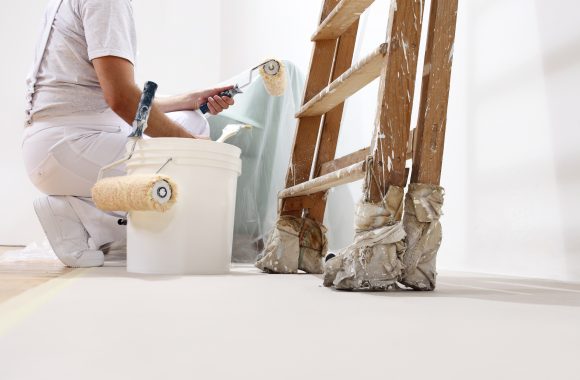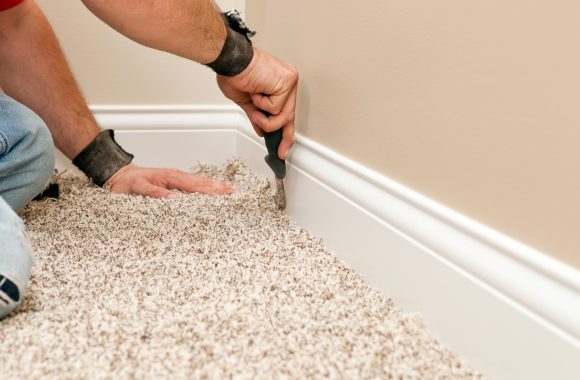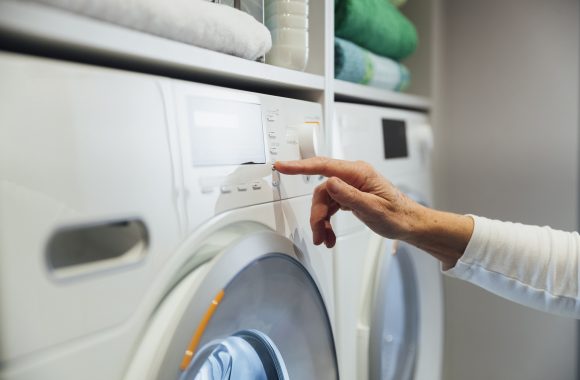A guide on the life expectancy of rental property products
Unfortunately, nothing lasts forever, and everything will come to the end of its lifespan at some point. In this guide, we will explain the average life expectancy of products and help you distinguish between what might be considered as fair wear and tear and what is likely to be seen as exceeding this.
There are no set rules and there are always some exceptions, however, many factors need to be considered.
Protect your deposit today
If you have taken a cash deposit, you must protect it in a government authorised scheme within 30 calendar days
1. Quality and original condition
The higher the quality, the longer the lifespan. It’s completely understandable that you may not want to necessarily put high quality items in a rented property.
It is important to remember that where an item is of budget or medium quality, a tenant can only be expected to contribute to an item of a similar quality should it have suffered from excess deterioration during the tenancy. To replace with an item of higher quality would be betterment.
It’s always good practice to keep any receipts for items and invoices for work carried out before and during the tenancy as these can help you to decide whether a tenant should pay towards any costs or whether it should fall under general maintenance. In the instance that you and your tenant are not able to come to an agreement, having receipts and invoices are very useful for an adjudicator.
Where an item is of particularly high value or importance to you, it is advisable not to keep this in the rental property. If something is of high quality which may require some maintenance, you should make the tenant fully aware of this before they enter the property, giving any guidance to help with the care during the tenancy. It may be seen as unreasonable to pass costs onto a tenant if they were unaware of this and their responsibilities.
2. The length of the tenancy
The longer the tenancy, the more natural wear and tear you should expect.
Where something was already not new at the start of the tenancy and a tenant has gone on to live in the property for a relatively long period, it is reasonable to expect to replace some items and redecorate areas. Where an item may have suffered from some deterioration exceeding fair wear and tear, it still cannot be replaced with new.
An allowance must always be made for natural depreciation on any replacement items or redecoration, depending on the length of the tenancy and its original age and condition to avoid betterment.
Protect your deposit today
If you have taken a cash deposit, you must protect it in a government authorised scheme within 30 calendar days
3. Number and age of occupiers
Consideration must be given to whether there is single occupancy or a large family living at the property. The more occupants, the more wear and tear that will naturally occur, particularly to the common areas such as the kitchen, dining room, living room, stairways and hall.
Some scuffs or marks are inevitable as you know from living in your own home and therefore, it’s important to be reasonable when it comes to deciding what contribution, if any, you ask a tenant to make.
It may be that you have permitted a tenant to keep a pet at the property, such a cat or dog and this is likely to cause additional wear than otherwise might be expected.
Like anything however, if there is damage caused because of the pet, a tenant can be expected to pay towards the cost of rectifying this. It is important for you to manage the tenants’ expectations here and make sure they are aware of this at the start of the tenancy.
4. Nature of the item
Some items following a tenancy may just need replacing where they only have a very short lifespan initially and are of little value.
For example, a shower curtain, where if properly cared for, may only last up to a year before it needs to be replaced. Other items such as door mats and toilet brush holders may also need replacing after each tenancy.
That is not to say that a contribution cannot be asked for but it is essential to be reasonable with your requests. A tenant may be more willing to pay towards other costs where they feel you are being fair in relation to others.
Protect your deposit today
If you have taken a cash deposit, you must protect it in a government authorised scheme within 30 calendar days
5. Nature of the deterioration
It’s important to consider the nature of deterioration and whether it’s likely to have been caused through misuse or whether it should be reasonably expected from the tenancy.
Examples of deterioration which may be considered as fair wear and tear include things such as loose door handles and toilet seats, carpets flattening to walkways, slight discoloration, light scuffs or rub marks. Where you feel issues such as these are caused by misuse, it’s important to be able to support this with evidence.
Where an item may be described as loose at the start and is broken at the end, such as a toilet seat, it may not be reasonable to charge a tenant for this as on a balance of probabilities, this will have occurred due to its original condition and everyday use combined. Any repairs reported by a tenant should try to be addressed as soon as possible to avoid any further damage.
What is the average life expectancy of items?
The below information on typical life expectancies is based generally on items being of a medium quality. Please note that this is only a guideline but will be helpful when assessing replacement values or compensation that you can expect a tenant to pay at the end of a tenancy.

Decoration
| Hallway / landing / stairs / kitchen / bathroom | Up to 3 years |
| Dining room / living room | Up to 4 years |
| Bedrooms | Up to 5 years |

Carpets
| Budget / low quality | Up to 3 years |
| Medium quality | Up to 8 years |
| Top quality | Up to 15 years |

Appliances
| Washing machines / tumble dryers | Up to 6 years |
| Fridges / freezers | Up to 8 years |
| Cookers / ovens / hobs | Up to 10 years |

Furniture
| Dining chairs | Up to 3 years |
| Beds | Up to 5 years |
| Mattress | Up to 8 years |
| Sofas | Up to 8 years |
Protect your deposit today
If you have taken a cash deposit, you must protect it in a government authorised scheme within 30 calendar days
It is worth remembering the importance of building a good relationship with your tenants from the start of the tenancy as this will help when trying to reach mutual settlement when it comes to wear and tear
Offering tenants good advice from the beginning of their tenancy and managing everyone’s expectations throughout, together with having quality evidence will help to avoid a formal resolution at the end of a tenancy.
Read our recent case study we dealt with on damages and fair wear and tear and our guide Fair wear and tear – what is it and how is it applied?